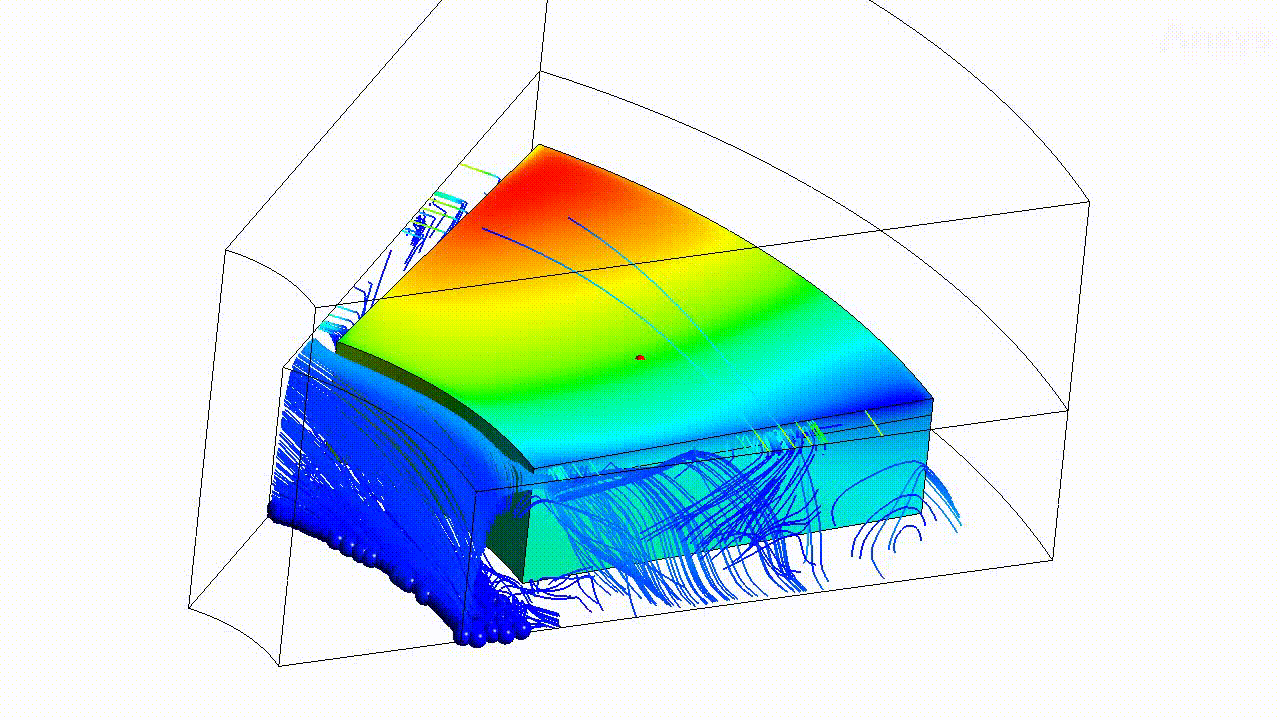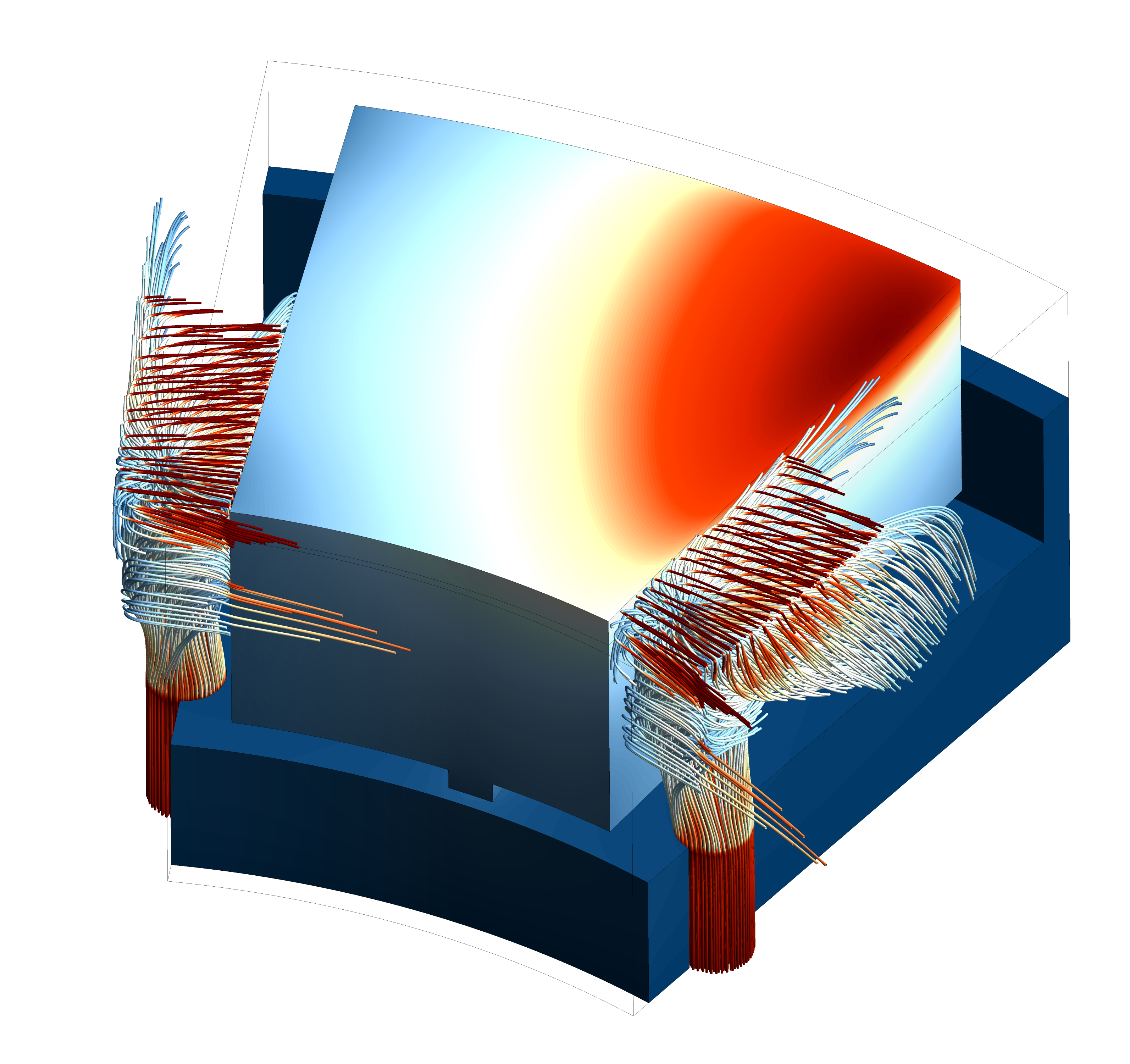Coupled flow simulation of radial tilting pad bearings and axial bearings with conjugate heat transfer
The operating condition of high-speed and highly loaded radial tilting pad bearings and thrust bearings is influenced to a large extent by the flow in the oil supply area. In particular, the convective heat transfer between oil and segments and the pressure build-up in front of the segments have a significant influence on characteristic bearing parameters.
While bearing calculations based solely on Reynold's differential equation do not take into account the flow outside the lubrication gap, a calculation based on the Navier-Stokes equations allows the system boundary to be further defined and the oil supply to be resolved in detail. The local temperature distribution in the entire bearing can be precisely determined by a coupled solution of the heat conduction equation. The extremely thin thermal boundary layers due to the Prandtl numbers pose special challenges when generating the calculation grids. The transitional turbulence occurring in parts of the flow area requires the additional solution of suitable turbulence models.
At the ITR, coupled flow simulations of plain bearings with conjugate heat transfer are carried out as part of research projects and verified by tests on the institute's own high-performance plain bearing test rig and thrust bearing test rig. The research results are incorporated into new calculation methods for industrial practice.



